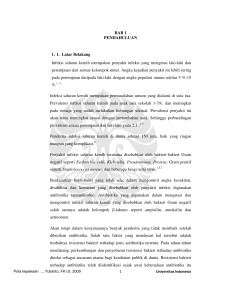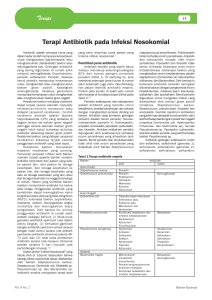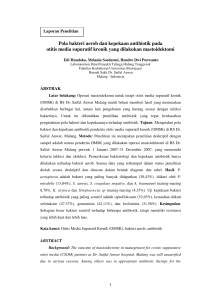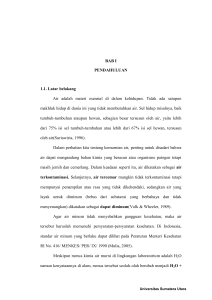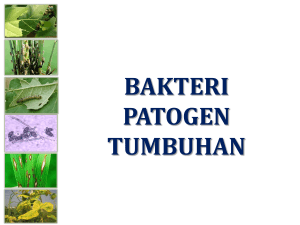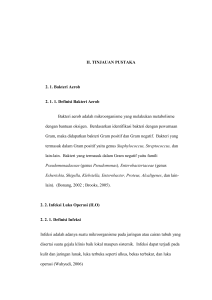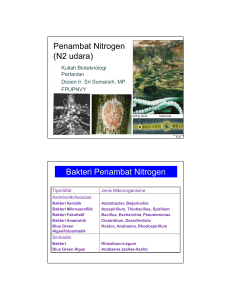vi ABSTRAK - Perpustakaan Universitas Indonesia
advertisement
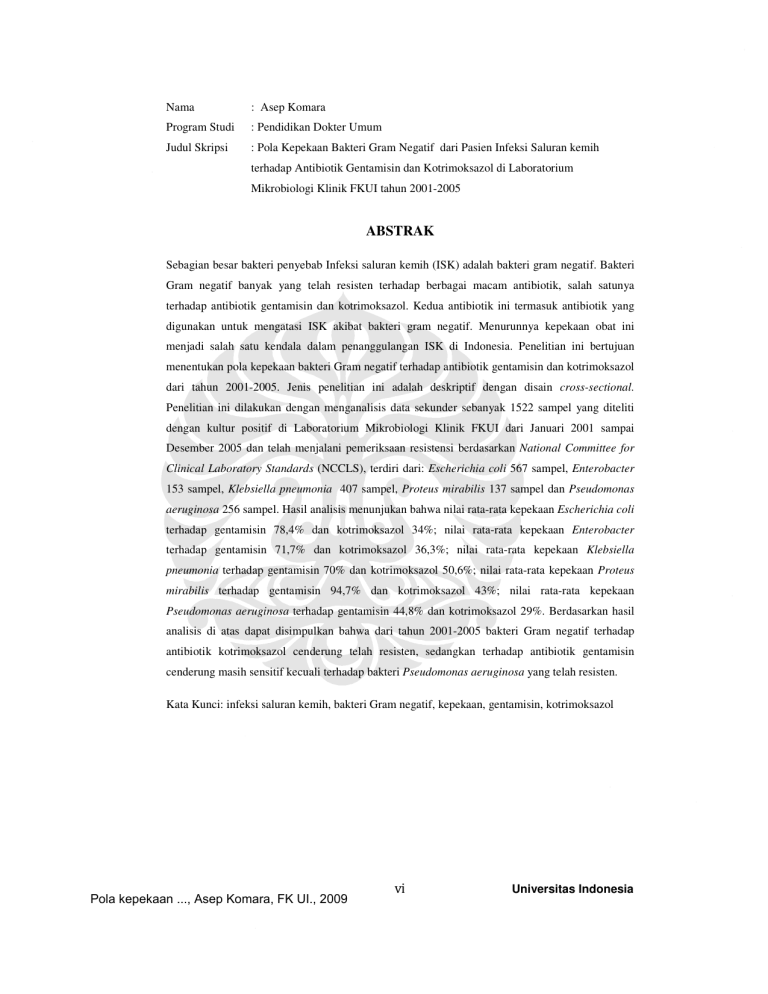
Nama : Asep Komara Program Studi : Pendidikan Dokter Umum Judul Skripsi : Pola Kepekaan Bakteri Gram Negatif dari Pasien Infeksi Saluran kemih terhadap Antibiotik Gentamisin dan Kotrimoksazol di Laboratorium Mikrobiologi Klinik FKUI tahun 2001-2005 ABSTRAK Sebagian besar bakteri penyebab Infeksi saluran kemih (ISK) adalah bakteri gram negatif. Bakteri Gram negatif banyak yang telah resisten terhadap berbagai macam antibiotik, salah satunya terhadap antibiotik gentamisin dan kotrimoksazol. Kedua antibiotik ini termasuk antibiotik yang digunakan untuk mengatasi ISK akibat bakteri gram negatif. Menurunnya kepekaan obat ini menjadi salah satu kendala dalam penanggulangan ISK di Indonesia. Penelitian ini bertujuan menentukan pola kepekaan bakteri Gram negatif terhadap antibiotik gentamisin dan kotrimoksazol dari tahun 2001-2005. Jenis penelitian ini adalah deskriptif dengan disain cross-sectional. Penelitian ini dilakukan dengan menganalisis data sekunder sebanyak 1522 sampel yang diteliti dengan kultur positif di Laboratorium Mikrobiologi Klinik FKUI dari Januari 2001 sampai Desember 2005 dan telah menjalani pemeriksaan resistensi berdasarkan National Committee for Clinical Laboratory Standards (NCCLS), terdiri dari: Escherichia coli 567 sampel, Enterobacter 153 sampel, Klebsiella pneumonia 407 sampel, Proteus mirabilis 137 sampel dan Pseudomonas aeruginosa 256 sampel. Hasil analisis menunjukan bahwa nilai rata-rata kepekaan Escherichia coli terhadap gentamisin 78,4% dan kotrimoksazol 34%; nilai rata-rata kepekaan Enterobacter terhadap gentamisin 71,7% dan kotrimoksazol 36,3%; nilai rata-rata kepekaan Klebsiella pneumonia terhadap gentamisin 70% dan kotrimoksazol 50,6%; nilai rata-rata kepekaan Proteus mirabilis terhadap gentamisin 94,7% dan kotrimoksazol 43%; nilai rata-rata kepekaan Pseudomonas aeruginosa terhadap gentamisin 44,8% dan kotrimoksazol 29%. Berdasarkan hasil analisis di atas dapat disimpulkan bahwa dari tahun 2001-2005 bakteri Gram negatif terhadap antibiotik kotrimoksazol cenderung telah resisten, sedangkan terhadap antibiotik gentamisin cenderung masih sensitif kecuali terhadap bakteri Pseudomonas aeruginosa yang telah resisten. Kata Kunci: infeksi saluran kemih, bakteri Gram negatif, kepekaan, gentamisin, kotrimoksazol Pola kepekaan ..., Asep Komara, FK UI., 2009 vi Universitas Indonesia Name : Asep Komara Study program : Medical Education Essay Title :Sensitivity Patterns of Gram Negative toward Antibiotic Gentamicin and Cotrimoxazol from the Urinary Tract Infection Patient’s in Clinical Microbiology Laboratory of Faculty of Medicine University of Indonesia Year 2001-2005 ABSTRACT Most of the bacteria causing urinary tract infection (UTI) is negative gram bacteria. Some of these bacteria are resistant to several antibiotics, including gentamycin and cotrimoxazole. Both of these antibiotics are used for treating UTI caused by negative gram bacteria. Decreasing sensitivity of these drugs being the obstacle in the management of UTI in Indonesia. This research is aimed to investigate the sensitivity pattern of the gram negative bacteria to gentamycin and cotrimoxazole from 2001 to 2005. The disain of this study was cross-sectional descriptive. This study was conducted by analyzing secondary data with 1522 positive culture samples from Clinical Microbiology Laboratory Faculty of Medicine University of Indonesia since January 2001 to December 2005 and had been checked for their resistance based on the National Committee for Clinical Laboratory Standards (NCCLS) including 256 samples of Eschericia coli, 153 samples of Enterobacter, 407 samples of Klebsiella pneumonia, 137 samples of Proteus mirabilis, and 258 samples of Pseudomonas aeruginosa. Results of the analysis showed that sensitivity of Escherichia coli to gentamicin and cotrimoxazol were 78.4% and 34% respectively; sensitivity of Enterobacter to gentamicin and cotrimoxazol were 71.7% and 36.3% respectively; sensitivity of Klebsiella pneumonia to gentamicin and cotrimoxazol were 70% and 50.6% respectively; sensitivity of Proteus mirabilis to gentamicin and cotrimoxazol were 94.7% and 43% respectively; sensitivity of Pseudomonas aeruginosa to gentamicin and cotrimoxazol were 44.8% and 29% respectively. Based on that analysis, it can be concluded that from 2001-2005, negative Gram bacteria tend to resistant to be cotrimoxazole, meanwhile to gentamycin, it’s still effective, except to resistant Pseudomonas aeruginosa. Keywords: urinary tract infection, negative Gram bacteria, sensitivity, gentamicin, cotrimoxazol Pola kepekaan ..., Asep Komara, FK UI., 2009 vii Universitas Indonesia


